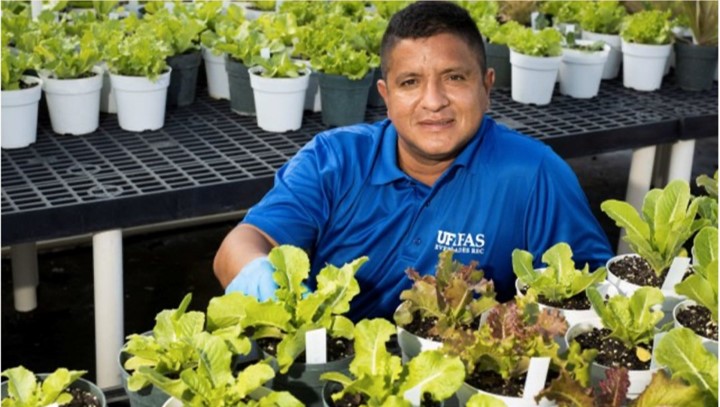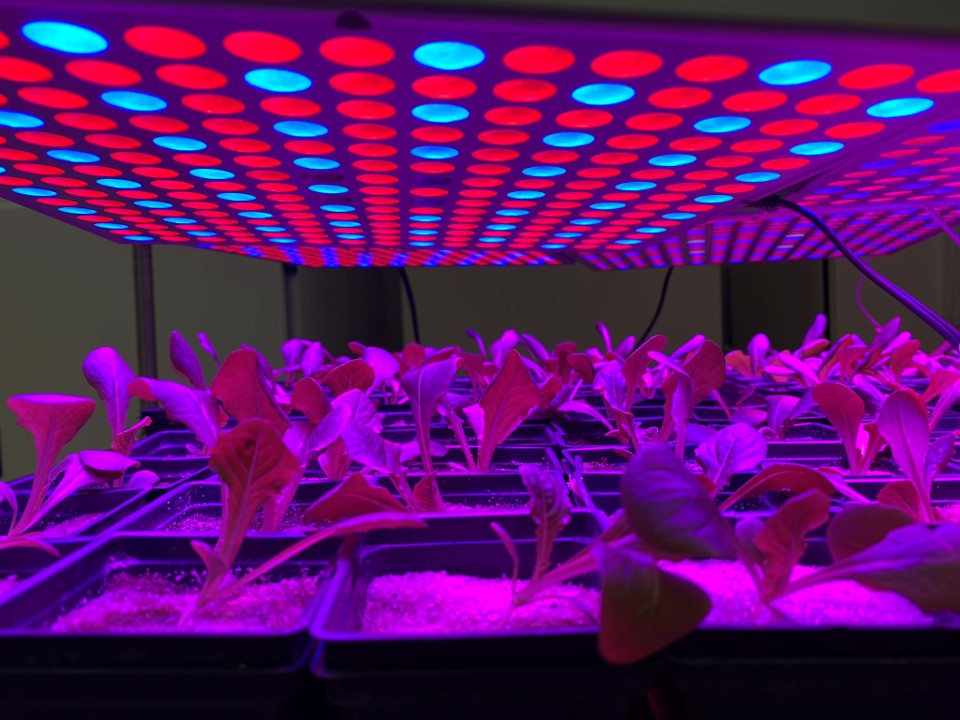Exploring alternative agricultural uses for your property can be challenging, especially when dealing with plant disease in crop and ornamental production. Often, we get calls from citizens that are acquiring or have acquired land and are unsure of what to do with it and contacting their local UF/IFAS Extension might seem like a logical first step in their quest to find the right fit for their situation.
It’s all in the genes, or is it?

Like all living things what you see growing depends on two factors: an organism’s genetics and the effects of the environment where it is living. Genetics are passed down from generation to generation by seed or by propagation of parent tissue (cloning). Genetic components packed in genes carry the basic information of plant or animal functions that ensure growth and production. Environmental factors on the other hand will challenge the organism’s potential and will determine if the genetic material is adequate for its survival under local conditions such as soil nutrition, weather patterns, foraging pressure, disease, and many other factors. In the case of crops, the correct genetic combinations will result in a plants worthiness to produce enough yields to be cost-effective. Less inputs from the farmer will result in lower production costs and higher revenues. Other factors that farmers and breeders look for are desirable traits in crop quality which will positively impact marketability and price.
Breeding for Florida
In general, the hardier the plant (due to its ability to cope with local environments) the better. This is the basis for local breeding programs such as the ones we fund by University of Florida plant breeders. These breeders select the best plants for the environment out of their breeding programs. These plants are tried in local areas, and eventually released to the market, where producers can purchase them.

To discuss more about this topic, I have reached out to Dr. German Sandoya, Lettuce Breeder and Extension Specialist based out of the University of Florida Everglades Research and Education Center in Belle Glade. Dr. Sandoya has worked as a lettuce breeder at the University of California, Davis and was based at the USDA-ARS in Salinas, California. The Salinas Valley is the biggest lettuce production area in the U.S., known as the “Salad Bowl of the World”.
Dr. Sandoya adds- “Conducting selections or “choosing” the desired lettuce plants must be done in the environment where a future variety or cultivar will be cultivated. This practice is common among plant breeders because each targeted zone has different temperature regimes and specific environmental conditions”.
Unlike other parts of the world, the lettuce growing areas of Florida are unique, and research-based recommendations have been developed for adapting this crop and making it viable. Here in Florida lettuce is planted during the winter months because this crop thrives in cool environments. Our commonly planted cultivars have the genetic potential to thrive in shorter periods of daylight as in wintertime.
When asked about the end goal of his breeding program he replies – “The University of Florida Plant Breeding Program serves over 30 commodities in the state. Plant breeders at UF, and in this case the lettuce breeding group, aims to release cultivars adapted to the environmental conditions and challenges in the state of Florida. Many of these environmental conditions are related to crops adapted to warmer temperatures, and resistant to diseases that quickly proliferate due to the high humidity and high temperatures during production times. Other challenges include adaptation to new production systems including controlled environments”. Our specialists and scientists want to have healthy crops that require low inputs, producing high quality leafy greens for Floridians to enjoy.
Breeding the perfect head of lettuce takes time
Genetic selection takes a long time. His breeding program usually employs multiple generations to produce Florida bred greens. “It takes about 8 to 10 years to develop new cultivars because breeding is a slow process. During this time, plant breeders make sure that the new cultivar will meet industry and market standards. There are tools used in the laboratory to aid the breeding process, but many times these tools are not useful when a characteristic is influenced by the environment or simply because plant breeders do not find the right source (another lettuce) with the right characteristic, as an example a resistant lettuce to a specific disease – states Dr. Sandoya.

Once those cultivars are selected, the next steps in the process include further evaluations from third party verifiers. “There are specialized companies that increase the seed, and make sure it is free of atypical plants. Then companies commercialize seeds to producers or seed dealers and through them to growers and/or home gardeners”.
Other challenges associated with lettuce production
Challenges to the lettuce farmers in Florida are not the lack of appropriate cultivars, but more of management, specifically in handling the fresh greens. The main challenge for lettuce growers is associated with produce recalls due to food-borne pathogens that may be present in the leaves, since they are consumed raw. Sandoya states that recent recalls have not been for lettuce grown in our state and assures us that the lettuce greens produced here come from careful farmers that pride themselves in taking all the necessary measures to avoid carrying harmful microbes that can cause human illness.
Support local: support Florida Grown

Dr. Sandoya and other UF breeders like him work tirelessly to bring us the best genetics that match our unique environment. All this effort will benefit Florida farm families that pride themselves in growing the best and safest head of lettuce that you will ever purchase in the store. “Florida products are fresh and ready to eat and most likely produced in our “backyard” -states Dr. Sandoya. Our industry follows all the safety protocols and sustainable practices to ensure that the production chain remains productive for generations to come. Cultivating lettuce (or any commodity) improved in the state will ensure that producers will not face crop losses as these varieties/cultivars are adapted to Florida conditions”.
Remember, the next time you go to the store or purchase your transplants remember the science behind evaluating what works for our local farmers. Let us take a minute to appreciate breeding programs that benefit our farm families by providing them with the best plants suited for our unique climatic conditions.
To find out more about producing lettuce or any other agriculture-related topics, please contact the UF/IFAS Extension Hardee County office at 863-773-2164 or send me an email to jonael@ufl.edu. Your local Extension office is your trusted source of research-based information.
Follow us on Facebook at: (2) UF IFAS Extension Hardee County | Facebook. To view our educational videos, please go to UF/IFAS Extension Hardee County – YouTube or UF IFAS CAFE LATINO – YouTube for more content in Spanish and English.

 0
0
